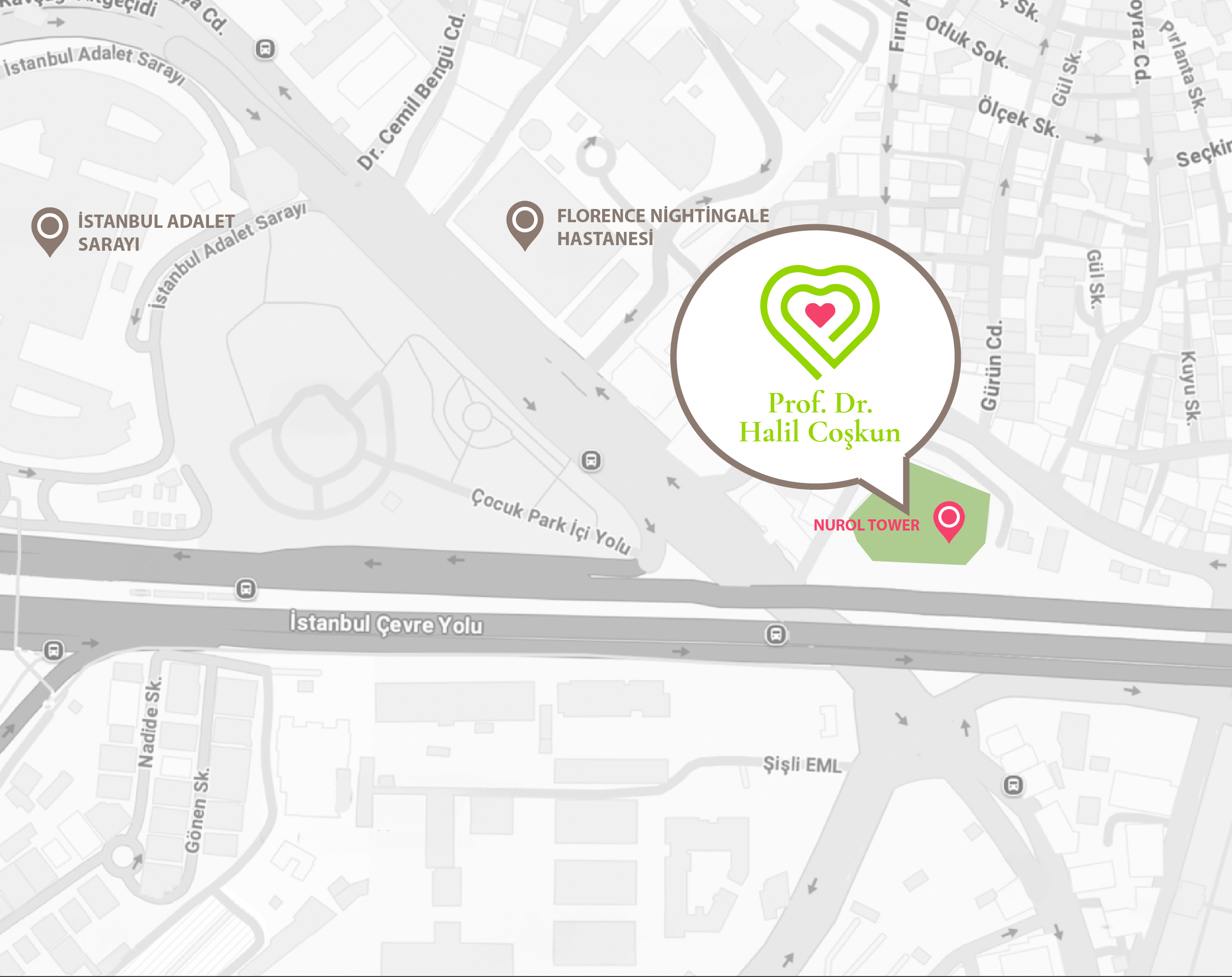What is a Gastric Balloon?
 Gastric balloon treatment is not a surgical procedure; it is a weight loss method applied through an endoscopic technique that temporarily reduces the volume of the stomach.
Gastric balloon treatment is not a surgical procedure; it is a weight loss method applied through an endoscopic technique that temporarily reduces the volume of the stomach.
In this procedure, a silicone balloon filled with 400–700 ml of liquid is placed in the stomach. This helps the patient consume less food and increases the feeling of fullness.
Procedure time: 10–20 minutes
Anesthesia: Light sedation
Hospital stay: Not required – usually discharged after 3–4 hours of observation.
How Long Does the Gastric Balloon Last?
Gastric balloons are designed to be effective for different durations.
Depending on the type of balloon applied:
- 6-month gastric balloon
- 12-month gastric balloon
At the end of the duration, the balloon is removed endoscopically.
Which Gastric Balloons Do We Use?
At our clinic, we only prefer reliable gastric balloon brands that are FDA and CE approved and scientifically proven. After the application, the certificate and product information of the used gastric balloon will be provided to you in writing.
The gastric balloons we use are:
Orbera® (Apollo Endosurgery)
- FDA and CE approved
- 6-month liquid-filled balloon
- One of the most commonly used and clinically successful balloons
Spatz3® Adjustable Balloon
- FDA and CE approved
- Can stay up to 12 months
- Allows personalized intervention with its adjustable volume
Allurion® Elipse™ Balloon
- CE approved (non-endoscopic swallowable balloon)
- No anesthesia, endoscopy, or removal procedure required
- 4-month usage period
- FDA approval process ongoing
Medsil®
- CE approved
- 6-month liquid-filled classic gastric balloon
- Preferred especially for the preparation period
Each balloon type is recommended based on the individual’s health condition, weight goal, and preference. The appropriate balloon type will be determined by your doctor after a consultation.
Who is Suitable for the Gastric Balloon?
The gastric balloon procedure may be recommended for the following groups:
- Overweight individuals (BMI < 30 kg/m²) – a supportive method for those who cannot lose weight through diet and exercise.
- Super morbidly obese individuals (BMI > 60 kg/m²) – can be used to start weight loss before bariatric surgery and reduce surgical risk.
What Complaints Can Be Seen After the Gastric Balloon?
The most common temporary complaints in the first days:
- Nausea
- Vomiting
- Cramp-like stomach pains
These complaints usually decrease on their own within 48–72 hours.
However, rarely, balloon intolerance may develop and the balloon may need to be removed early.
What are the Rare Complications?
- Balloon deflation and intestinal obstruction: Very rare. The fluid inside the balloon may leak and the balloon may leave the stomach, potentially causing an obstruction in the digestive system.
- Stomach ulcer and reflux: Irritation in the stomach lining or acid increase may cause complaints.
- Balloon rupture: Very rare in balloons that have reached their expiration date.
How Do I Know if the Balloon Has Popped?
If the gastric balloon ruptures, the blue-colored liquid inside will pass into the stomach and from there to the kidneys. In this case:
- Urine will turn a greenish-blue color
- Similarly, a color change may be seen in the stool
If this is noticed, you should consult your doctor immediately, and the balloon should be removed urgently through endoscopy.
The gastric balloon is an effective and non-surgical solution for weight loss. However, it should be remembered that it is a temporary method and should be supported by healthy eating habits.
With proper patient selection and an experienced team, the success rate is higher.









